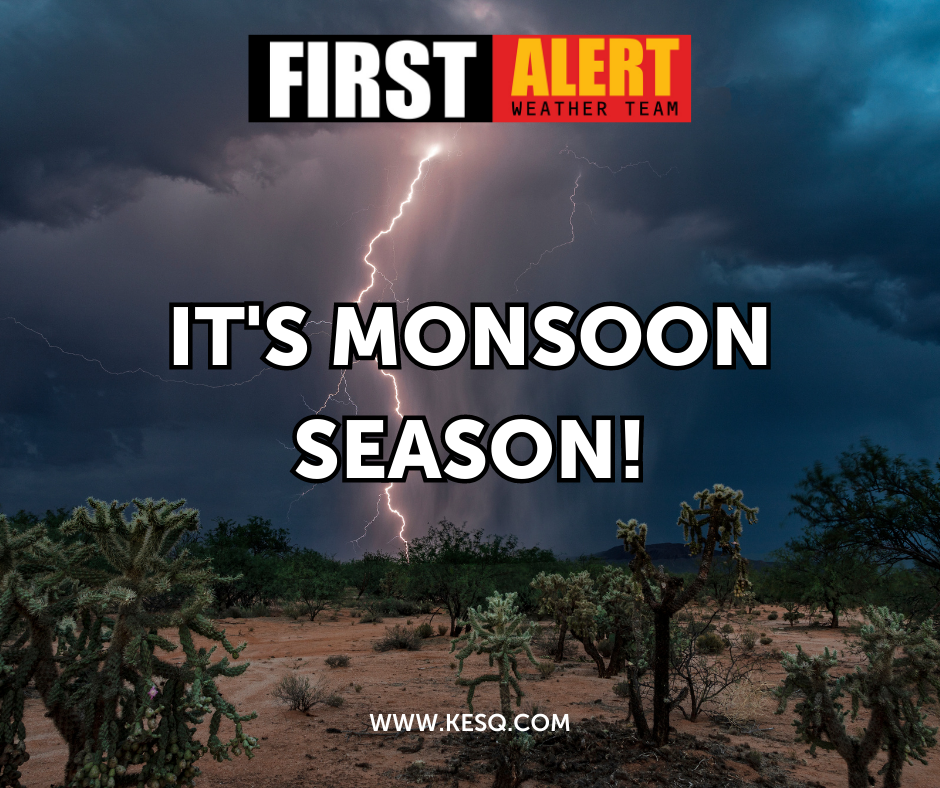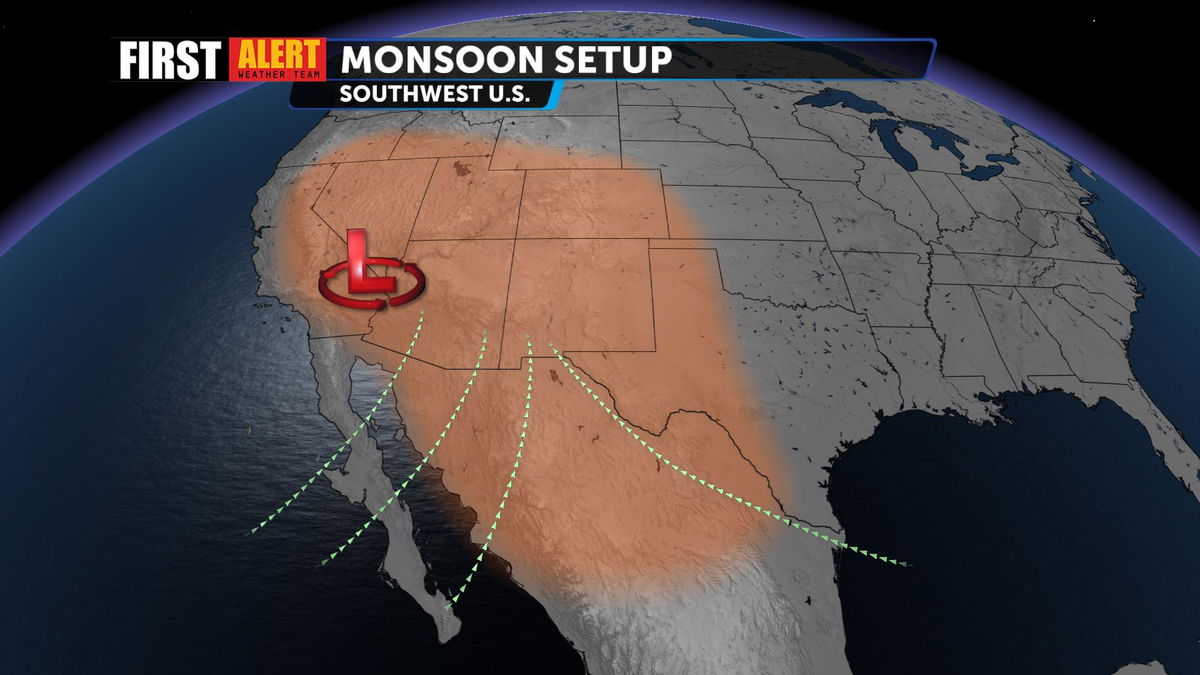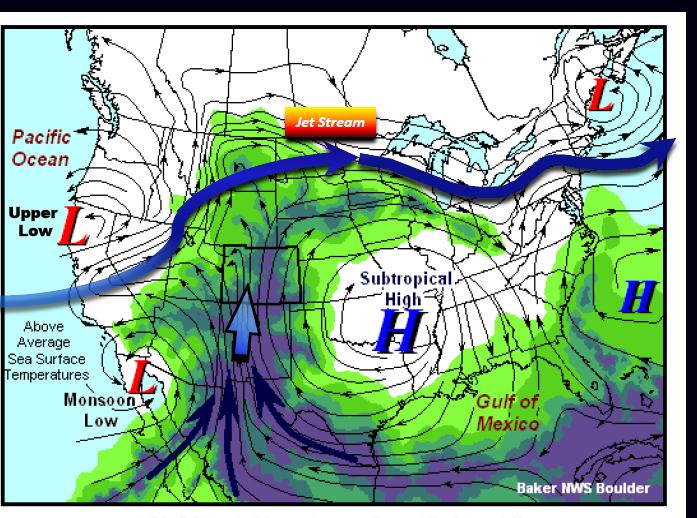What Is The North American Monsoon?

A monsoon is a seasonal change in the wind pattern for a specific area. Monsoons bring heavy rains to many areas across the globe. They form when temperatures on land warm up much faster than over the ocean. This differential heating can have a large impact on normal atmospheric circulations, allowing for a monsoon to develop.
During the summer months, a combination of longer days and a higher angle of the sun in the sky cause many parts of the desert southwest to heat up quite considerably. This causes the air above the surface to warm up as well. Given that warmer parcels of air are less dense than colder air, this parcel will rise and cause a semi-permanent area of low pressure to form over the southwest. This draws in moisture from the Gulf of Mexico, the Gulf of California, and the Pacific Ocean.

Conversely, the southern plains do not heat up quite as much as the southwest does. In turn, this allows for the formation of a semi-permanent area of high pressure. It's important to note that air flows counterclockwise around areas of low pressure and clockwise around areas of high pressure (in the Northern Hemisphere). Thus, moisture is funneled between the two pressure systems as shown in the image below.

While monsoon season formally started on June 15th, the greatest effects of the North American Monsoon are typically felt in July and August. The gif below shows what the water vapor imaging of a fully realized monsoon looks like. The orange and brown colors show dry air whereas the gray, blue and green colors show moist air and storms.

It’s important to note that every monsoon season is different and there are many factors which impact its development. The First Alert Weather team is tracking these factors and any possible impacts to us here in the valley.




